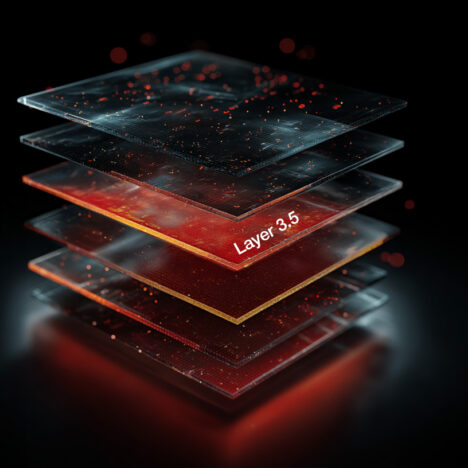Making Critical Infrastructure Invisible to Attackers
Network Cloaking with CSOI®
In today’s hyper-connected world, visibility is vulnerability. If a device can be discovered, it can be targeted. If it can be targeted, it can be breached. This is the fundamental reality driving the rise of network cloaking—a proactive cybersecurity method designed to obscure devices from unauthorized users, malicious actors, and automated scanning tools.
According to Wikipedia, network cloaking (or obfuscation) is the practice of hiding network infrastructure to reduce the attack surface and protect against reconnaissance. By ensuring that unauthorized systems can’t even see sensitive devices, you eliminate entire classes of attacks before they begin.
This approach fits squarely within the Zero Trust security model, where nothing and no one is trusted by default, and every connection must be authenticated, authorized, and continuously verified. The CSOI cybersecurity solution takes network cloaking beyond simple obfuscation. By operating at the Layer 3.5 level of the OSI model—between the network and transport layers, it introduces cryptographic device identities, enforces deny-by-default trust policies, and enables micro-segmentation across OT (Operational Technology), IT, and IoT environments.

What is Network Cloaking?
Network cloaking is a cybersecurity technique that obscures devices by making them invisible to unauthorized users and discovery tools. This prevents adversaries from gathering information about your network topology, connected devices, open ports, and services.
In practical terms, network cloaking:
- Stops reconnaissance before it starts by preventing ping responses, port scans, or SNMP queries from reaching unauthorized users.
- Reduces the attack surface by ensuring that critical devices aren’t visible on the network unless explicitly permitted.
- Aligns with Zero Trust principles by allowing only authenticated, authorized, and policy-compliant entities to communicate.
While some forms of cloaking rely on firewall rules or VLAN segmentation, CSOI achieves this invisibility at a deeper layer using Host Identity Protocol (HIP) and a Layer 3.5 overlay network.
The Layer 3.5 Advantage
Traditional network security models operate either at Layer 3 (Network) or Layer 4 (Transport) of the OSI model. CSOI’s approach is different—it shims in at Layer 3.5, an overlay layer between the two. This unique positioning allows CSOI to:
Authenticate first, route later – Devices must present a cryptographic identity before any packet is processed.
Operate independently of IP addressing – Preventing attackers from exploiting IP-based trust assumptions.
Enforce overlay-based trust policies – Only devices within a defined policy of trust can communicate.
This “3.5 Layer” concept means that even if an adversary can reach the physical network, their traffic is ignored unless their device identity is recognized and authorized.

How CSOI Implements Network Cloaking
1. Host Identity Protocol (HIP)
The Host Identity Protocol replaces traditional IP-based identification with cryptographic key pairs assigned to each device. Without the proper key, a device cannot interact with—or even detect the existence of—protected assets.
2. The “Red Diamond” Overlay
CSOI creates encrypted overlay networks called Red Diamonds. Only devices inside these overlays, and meeting strict identity and trust criteria, can communicate. To any other entity, these devices appear nonexistent.
3. Deny-by-Default Micro-Segmentation
CSOI enforces a deny-by-default policy for all network communications. By default, no device can talk to any other without explicit authorization, preventing lateral movement and containing breaches.
4. Real-Time Policy Control via the Conductor
The CSOI Conductor is a centralized orchestration platform that manages device onboarding, trust policies, and cloaking rules. It offers real-time visibility into network activity and can integrate with SIEM or SOAR platforms for automated response.
Why Network Cloaking Matters for OT, IT, and IoT
In Operational Technology (OT) environments—like power grids, water treatment plants, or manufacturing lines—many devices are legacy systems without built-in security. They can’t run modern endpoint protection, making them ideal targets for attackers.
CSOI’s cloaking:
- Obscures devices like PLCs, RTUs, and SCADA servers from unauthorized discovery.
- Blocks reconnaissance attempts in both IT and OT segments.
- Supports hybrid environments including on-prem, cloud, and edge devices.
- Protects IoT devices like IP cameras and sensors from being exploited.
Benefits of CSOI Network Cloaking
Prevents Reconnaissance Attacks
Attackers rely on scanning to find weak points. Cloaked devices simply don’t appear, stopping their efforts cold.
Blocks Lateral Movement
If one device is compromised, attackers can’t pivot to others because they can’t see them.
Secures Remote and Field Assets
CSOI can be deployed in small form-factor appliances or virtual instances to protect field-deployed assets, even over satellite links like Starlink.
Enables Compliance
Aligns with Zero Trust mandates, NIST SP 800-207, and industry-specific regulations.
Integrates with Existing Infrastructure
No forklift upgrades—CSOI works alongside your existing network, adding cloaking as an overlay.


Real-World Use Cases
-
Utility Company
A regional power utility deploys CSOI in substations. Control systems, once visible to internal scans, are now cloaked. Only authorized devices with cryptographic identities can detect or communicate with them. -
Municipal Water Treatment
Remote pumping stations are secured with CSOI appliances. Unauthorized users, even with network access, can’t see control systems. -
Enterprise IT
Corporate servers containing sensitive intellectual property are cloaked from all but a defined set of engineering workstations.
The Answer
Network cloaking is a cybersecurity technique that obscures devices from unauthorized discovery, making them invisible to attackers, port scans, and reconnaissance tools. By hiding network assets, organizations dramatically reduce their attack surface.
CSOI implements network cloaking using a Layer 3.5 overlay, the Host Identity Protocol (HIP), and deny-by-default trust policies. This ensures that only devices with verified cryptographic identities can detect or communicate with protected assets. The result is a zero trust environment that prevents reconnaissance attacks, blocks lateral movement, and secures OT, IT, and IoT systems across utilities, government, and enterprise environments.
Network cloaking isn’t just a defensive tactic, it’s a strategic enabler for Zero Trust Security. By obscuring devices, CSOI eliminates the first step in most cyberattacks: reconnaissance. Its Layer 3.5 overlay technology, combined with cryptographic device identities and micro-segmentation, ensures that only trusted, authorized devices can ever interact with protected resources.
From operational technology in utilities to critical enterprise IT assets, CSOI delivers a scalable, identity-first security layer that works with your existing infrastructure. If attackers can’t see your devices, they can’t attack them. That’s the power of CSOI network cloaking.
Ready to Obscure Your Network and Protect What Matters Most?
If attackers can’t see your devices, they can’t attack them. That’s the promise of CSOI network cloaking.
Start the conversation with our team today and get started securing your OT, IT, and IoT infrastructure with the industry’s only Layer 3.5 Zero Trust overlay solution.





